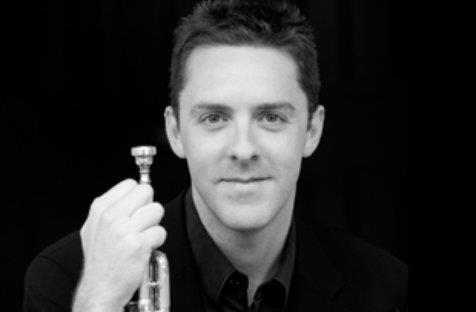It augurs well for chamber music in Melbourne that the Australian String Quartet was performing at the large Elisabeth Murdoch Hall, at the same time that the Seraphim Trio attracted a good-sized audience to the Salon.
However, from an audience perspective, having a traditional arrangement of seating in the Salon (rather than ‘in the round’) was frustrating as most had a limited view of the performers. Thankfully, they were still heard to advantage, bringing one of Handel’s best-known arias irresistibly to mind: ‘Let the bright seraphim, in burning row/ Their loud, uplifted, angel trumpets blow’.
Ironically, it was guest performer David Elton who was to play the trumpet; the Seraphim Trio comprised piano (Anna Goldsworthy), violin (Helen Ayres) and cello (Tim Nankervis). The first item – Beethoven’s Trio Op.1 No.3 in C minor – was an excellent choice to demonstrate both the generous acoustics of the space, and the synchronicity between the three players.
Although marked ‘allegro con brio’ the first movement is tinged with sadness, perhaps because of its minor key and (at first) a rather self-effacing violin.
It’s important to acknowledge technical achievement but this performance was about so much more. The Seraphims delivered Beethoven’s music with empathy, not just for the composer’s intention, but also for each other’s contribution to the work. In this respect, it was good to hear Ayres’ violin more strongly in the Andante and the cello given the lead at times.
As for the piano: although Goldsworthy could not be accused of making a grab for the spotlight, Beethoven would have none of it, making relentless and showy demands on the instrument. But through the testing series of runs and other challenges, Goldsworthy delivered a flow of sound that subtly held the work together.
Beethoven’s contemporary, Hummel, was a protege of Mozart and it showed in his Trumpet Concerto, presented as the 1802 version for Trumpet and Piano Trio. Trumpet-player David Elton joined the Seraphim Trio and played the first of three works in a manner that showed why he was (presumably) the ‘virtuoso’ of the concert title.
Although Ayres stood to play – and at times enjoyed some duets with Elton – the role of the Trio was to emulate a full orchestra of the original work. This they did with ease, starting with the sprightly first movement. The Andante was infused with feeling and warmth before the Rondo set all players quite a pace. Energetic music, with overtones of a foxhunt, it made the most of Elton’s brilliant trumpet and gave the trio the importance it deserved, with some lovely trills and broken chords indicating that the composer saw it as more than support for the soloist.
It was after interval that the trumpet came into its own, with both works arrangements by the Australian contemporary composer, James Ledger. The first was by Manuel de Falla, his Siete Canciones Populare Espanalos, (although Ledger was commissioned by the Seraphim Trio to arrange just four).
First was ‘Moorish Cloth’, in which the trumpet had the melody while the cello was unusually percussive. But it was the next, ‘Seguidilla Murciana’, in which the trumpet first rang out in a distinctly modern style, drawing attention away from the Trio. ‘Cancion’ restored some balance with violin and piano recalling the lushness of the original setting for mezzo-soprano.
The final ‘Polo’ (A Flamenco Dance) called for brilliant playing from all four musicians – and got it as the trumpet rose above at times a strident percussive accompaniment. One hopes the Seraphims (or an enlightened patron!) will commission the remaining Canciones.
There was confidence that the final work would be the highlight of the night, at least for Kurt Weill aficionados. The Threepenny Opera Suite lent itself magnificently to Ledger’s arrangement, from the full sound of the imaginatively scored Overture, through the popular ‘Mack the Knife’ to the rhythmically challenging ‘Tango-Ballad’.
Each of the songs had its own charm, from the lovely cello in ‘Polly’s Song’ to overtone of the circus in ‘Canon Song’.
The Finale was a triumph although its mood, true to the original, was one of doom. A mournful trumpet and violin followed the grim piano and cello opening, and a cacophonous section gave place to a funereal sound. As an ensemble piece this was a triumph and, although there was no need, it was strong justification for inviting Elton to join the ‘bright Seraphim’ for so much of the program.
Rating: 4 ½ stars out of 5
The Virtuoso
Seraphim Trio
Anna Goldsworthy, piano
Helen Ayres, violin
Tim Nankervis, cello
Guest: David Elton, trumpet
Beethoven – Trio Op. 1 No. 3 in C minor
Hummel – Trumpet Concerto (1802 version for trumpet and piano trio)
Weill – Threepenny Opera Suite, arranged James Ledger
De Falla – 4 Canciones Populares Espanolas, arranged James Ledger
Salon, Melbourne Recital Centre
11 September
Additional dates:
MCLAREN VALE: Cariole Vinyards, 14 September
SYDNEY: The Independent Theatre, 22 September





